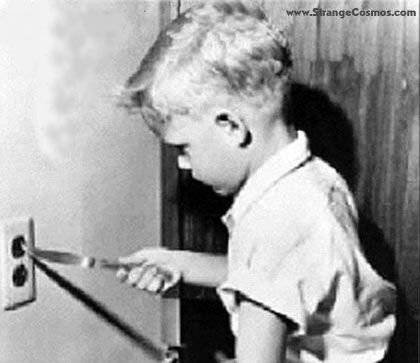Here's another home repair mystery for the consideration of the electrically inclined:
Yesterday I installed a replacement light fixture above our garage door. When I checked the voltage (to see if it was "cold" with the switch turned off) it read 122 V with the switch on and 55V with the switch off. I turned off the breaker and completed the installation of the new fixture.
As before, the light works fine, and an incandescent bulb doesn't illuminate (even very dimly) with the switch turned "off." There's no voltage between either wire and ground with the switch turned off.
Any suggestions/common causes for this that I should investigate? I just can't imagine where 55 volts could be coming from, unless it is 120V through a really high-resistance path. And why doesn't the lamp illuminate with the switch off?
Yesterday I installed a replacement light fixture above our garage door. When I checked the voltage (to see if it was "cold" with the switch turned off) it read 122 V with the switch on and 55V with the switch off. I turned off the breaker and completed the installation of the new fixture.
As before, the light works fine, and an incandescent bulb doesn't illuminate (even very dimly) with the switch turned "off." There's no voltage between either wire and ground with the switch turned off.
Any suggestions/common causes for this that I should investigate? I just can't imagine where 55 volts could be coming from, unless it is 120V through a really high-resistance path. And why doesn't the lamp illuminate with the switch off?

